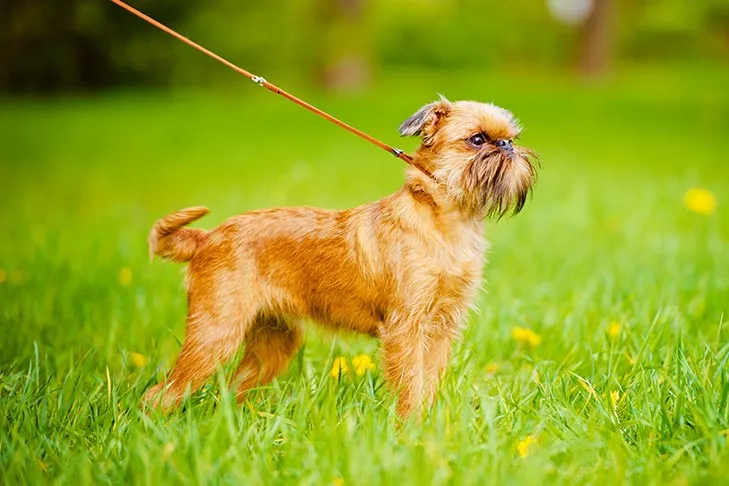Learning to come when called, or having a reliable recall, is arguably one of the most crucial skills your dog can master. This command, often referred to as “come” or “here,” is not just about obedience; it’s a vital safety measure that can protect your dog from various hazards. When you Teach Dog To Come To You, you’re instilling a fundamental behavior that requires your dog to disengage from distractions and return to your side, making your walks and outdoor adventures safer and more enjoyable. The challenge lies in making you the most rewarding and exciting part of their environment, ensuring that returning to you is always more appealing than anything else.
Understanding Reliable Recall
“Reliable recall” means that when you give the command for your dog to come, you are almost completely confident they will respond quickly and enthusiastically. While dogs are not machines and no behavior is 100% guaranteed, for a life-saving skill like recall, the goal is to achieve the highest possible consistency. This level of confidence is essential if you plan on allowing your dog off-leash in unfenced areas or places beyond a designated dog park. Moreover, a strong recall is invaluable in emergency situations, allowing you to quickly secure your dog. To truly master this, it’s beneficial to explore various techniques to teach dog to come every time and build unwavering consistency.
Safe Alternatives for Off-Leash Play
If your dog’s recall isn’t yet rock-solid, there’s absolutely no need to feel pressured to let them off-leash. Keeping your dog on-leash in public spaces is a responsible choice and ensures their safety. Consider alternative ways to provide them with freedom and exploration, such as fenced dog parks, secure private yards, or using a long leash. These options allow your dog to sniff, run, and explore more extensively while remaining safe and under your control.
 Brussels Griffon dog calmly standing on a leash in a grassy park, demonstrating safe on-leash dog walking.
Brussels Griffon dog calmly standing on a leash in a grassy park, demonstrating safe on-leash dog walking.
Regardless of the strength of your dog’s recall, it’s imperative to always abide by local leash laws. This includes obeying regulations in your own front yard if it’s not fenced, as well as in local, state, and national parks. These rules are in place for the safety of your dog and others. If you’re looking for more comprehensive guidance, learning how to teach my dog to come when called can provide a structured approach to building this essential skill.
Initiating Recall Training
The foundation of successful recall training is making it a fun and rewarding game for your dog. Begin your sessions in a calm, low-distraction environment, such as inside your home.
- Start with Enticement: First, grab your dog’s attention with a highly desirable dog toy or a particularly tasty treat.
- Lure and Praise: As your dog starts to move towards you, offer enthusiastic verbal praise.
- Reward Generously: The moment they reach you, immediately reward them with the toy or treat.
- Introduce the Verbal Cue: After several repetitions, once your dog consistently looks at you and begins moving towards you, introduce your chosen verbal cue (e.g., “Come,” “Here,” “Close”). Crucially, only add the cue when you are certain your dog is already responding and moving in your direction. This helps them associate the word with the action of coming to you.
Once your dog grasps the basic concept, you can gradually increase the challenge. Start by saying your chosen recall cue before showing them the treat. Always reward their successful return with a high-value treat, such as small pieces of cooked chicken, cheese, or beef liver. These high-value rewards make the act of coming to you incredibly worthwhile for your dog. Additionally, slowly introduce more distance within your low-distraction environment, requiring your dog to travel further to reach you. If you’re facing difficulties, understanding how to teach dog to come when called offers further detailed advice.
Engaging Recall Games to Practice
- Catch Me: While walking your dog on-leash, get their attention. Then, quickly turn and run a few steps away from them. As your pup moves to follow you, enthusiastically say your recall cue. After a short run, stop and reward them with a treat or a favorite toy. Always ensure your dog is paying attention before you run to avoid any sudden jerks on the leash.
- Find Me: Once your dog has a good grasp of the basic recall, you can build speed and excitement by calling them from another room. When your dog successfully locates you, offer lavish praise and plenty of rewards. This hide-and-seek-style game is not only fun for both of you but also reinforces their desire to find you.
- Hot Potato: Gather two or more family members or friends, each equipped with high-value treats. Stand a good distance apart and take turns calling your dog between you. Each time your dog comes to the person who called them, they should receive a reward. This game teaches your dog to respond to different voices and in different directions.
A common training pitfall is to recall your dog, immediately put them on the leash, and head home. Dogs are smart and will quickly learn to associate the “come” command with the end of their fun, making them less likely to respond eagerly in the future. A better practice is to recall your dog, praise and reward them, then release them to go back to what they were doing. This helps your dog see coming to you as a positive interruption, not the end of playtime. For more advanced training, especially in varied environments, learning to teach dog to come with distractions is crucial.
Avoiding “Poisoning the Cue”
Have you found yourself saying, “Come! Come! Come! Come! Come! Please come!” repeatedly? If so, you might have inadvertently “poisoned your cue.” This often happens unintentionally when the recall command becomes unclear or develops a negative association for the dog, leading them to ignore it. The easiest way to poison a cue is to overuse it, repeating the word over and over without your dog responding, or by using it in situations where the dog doesn’t want to come (e.g., to give them a bath or trim nails when they prefer not to).
 Energetic Cocker Spaniel running freely in a fenced backyard, highlighting the need for reliable recall training.
Energetic Cocker Spaniel running freely in a fenced backyard, highlighting the need for reliable recall training.
In such cases, the most effective solution is to switch to an entirely new verbal cue. For example, if you previously used “come,” you could transition to “here” or “close.” When introducing the new recall cue, go back to the absolute basics, starting again in a low-distraction environment and following the initial training steps to build a fresh, positive association. If your ultimate goal is greater freedom, exploring techniques for teaching your dog to come off leash will be invaluable.
Essential Recall Training Tips
- Avoid Repeating Yourself: If you find yourself having to repeat your recall cue, it’s a sign that the environment is likely too distracting for your dog, or they haven’t yet mastered the skill at that level. Re-evaluate your training environment or decrease the difficulty.
- Reward Eye Contact: Whenever you notice your dog voluntarily looking at you or choosing to be close, verbally praise them and immediately offer a treat. While this might seem like a lot of treats initially, you are reinforcing a powerful lesson: being near you and paying attention leads to wonderful things.
- Never Punish Your Dog for Coming: Even if your dog took their sweet time responding to your command and you feel frustrated, always praise and reward them upon arrival. Punishing them for eventually coming will teach them that coming to you leads to negative consequences, severely damaging your recall training efforts.
- Always Reward! When training recall, consistently use high-value treats and favorite toys. This is especially critical during the learning phase. You want your dog to strongly associate coming to you with receiving something truly fantastic.
- Practice Daily: Incorporate short, consistent recall practice sessions into your daily routine. Gradually increase the difficulty by introducing more distractions and greater distances. Moving too quickly can confuse your dog and reduce the reliability of their recall.
- In an Emergency, Don’t Chase: If your dog doesn’t respond to your recall in an emergency, resist the urge to chase them. Chasing can often turn it into a game for your dog, encouraging them to run further away. Instead, try running away from your dog; this often taps into their natural instinct to chase and may prompt them to follow you.
Conclusion
Teaching your dog to come to you reliably is a cornerstone of responsible dog ownership, ensuring both their safety and your peace of mind. By consistently using positive reinforcement, engaging in fun training games, and being mindful of common pitfalls like “poisoning the cue,” you can build a strong, enthusiastic response from your dog. Remember, patience, consistency, and high-value rewards are your best tools in helping your dog master this vital command. Keep training positive and rewarding, and soon your dog will be eagerly rushing to your side whenever you call.
